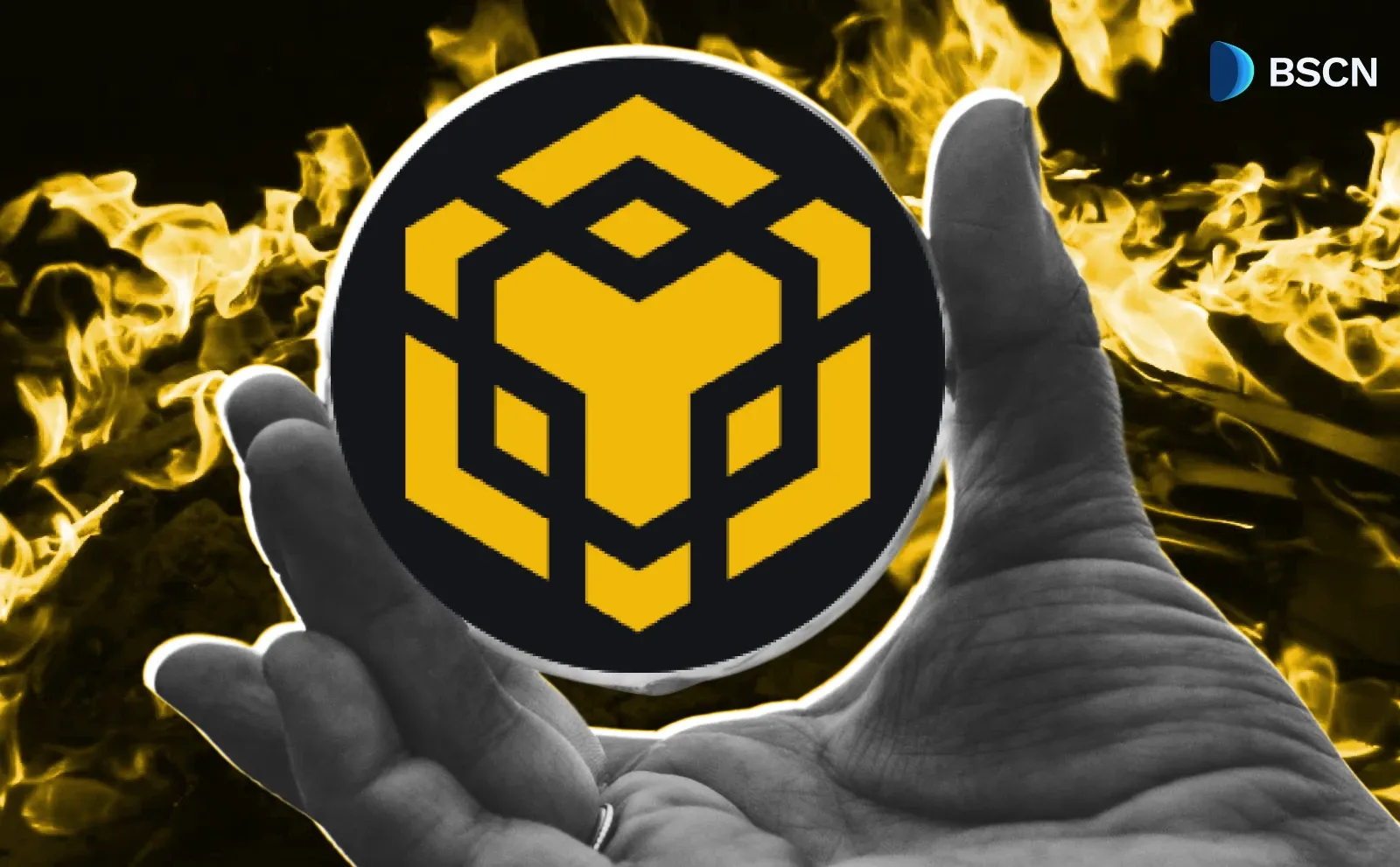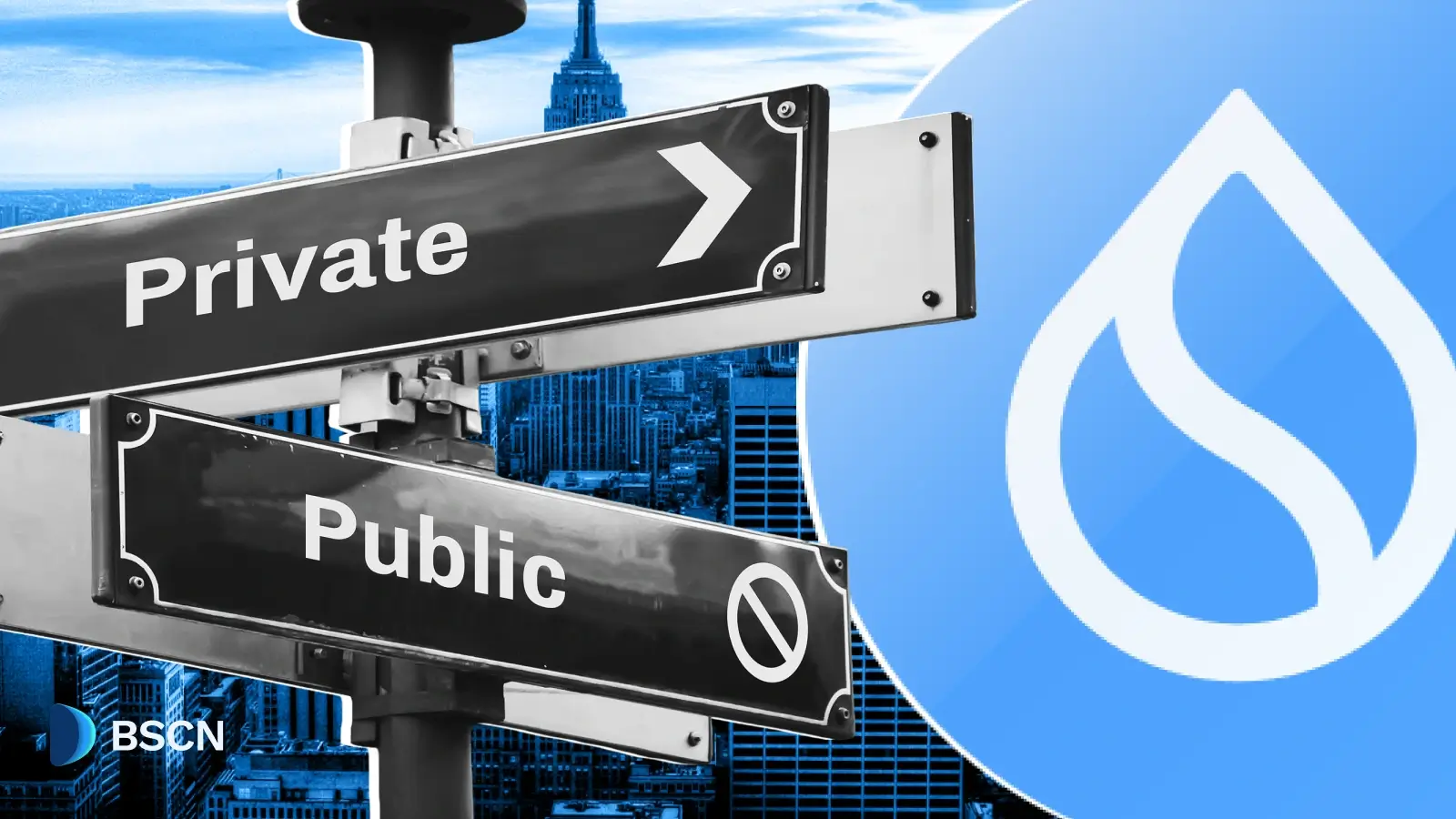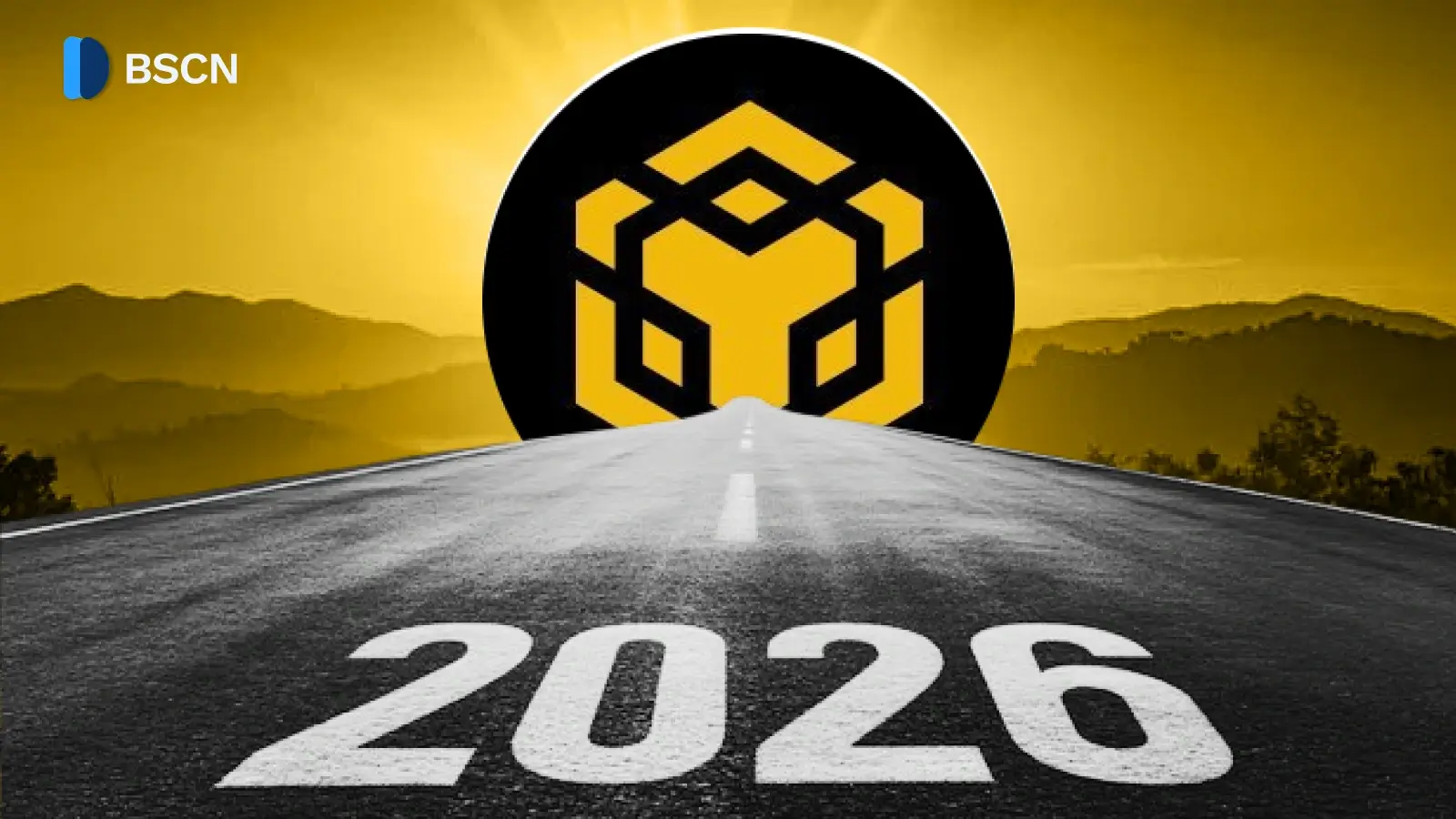Deepdive
(Advertisement)
What is OpenLedger & How Does it Work?

OpenLedger is a decentralized AI blockchain platform enabling data monetization, on-chain model training, and fair attribution. Learn how it works and its OPEN tokenomics.
Crypto Rich
July 23, 2025
(Advertisement)
Table of Contents
OpenLedger is a layer-1 blockchain infrastructure platform designed specifically for artificial intelligence applications, decentralizing the entire AI data lifecycle from creation to monetization. The project tackles what many consider artificial intelligence's biggest bottleneck: a $500 billion data ownership problem where major tech companies control vast data silos while the people providing that data receive zero compensation.
Rather than leaving data locked in corporate silos, OpenLedger creates a permissionless, verifiable ecosystem where anyone can contribute data, train models on-chain, and receive transparent rewards based on their actual contributions. Since launching in mid-2024 with the tagline "The AI Blockchain," OpenLedger has positioned itself as foundational infrastructure for trusted AI applications. The platform already has backing from heavyweight investors including Polychain Capital, MH Ventures, and HashKey Capital. While progressing through multiple testnet phases, the team continues building toward an anticipated mainnet launch that could reshape how AI development works.
The Problem OpenLedger Solves
Today’s AI landscape faces a massive data bottleneck, with industry estimates suggesting up to $500 billion in infrastructure investments needed to address compute and data challenges (Exponential View, 2024). Think about it: major tech companies control vast data silos that power AI development, yet the people and organizations providing that data see zero compensation. It's a system that concentrates power while leaving contributors empty-handed.
This centralization creates a cascade of problems:
- Data contributors receive no compensation despite providing the raw materials that make AI models valuable
- Developers struggle to access high-quality, specialized datasets needed for effective AI training
- Complete lack of transparency - nobody can verify how models were trained or trace outputs back to their sources
- Power concentration in the hands of major tech companies who control the entire process
OpenLedger flips this script entirely. By building on blockchain technology, it creates a transparent marketplace where data contributions get tracked, verified, and monetized through automated on-chain systems. No middlemen, no opacity - just direct compensation for actual value created.
OpenLedger's Background and Development History
The story begins in 2024 when AI and blockchain specialists Ramkumar Subramanian and Elangovan Kamesh recognized that centralized data control was strangling AI innovation. Ramkumar Subramanian, a decentralized systems veteran, and Kamesh, an AI infrastructure expert, founded OpenLedger to tackle the data silo problem that was limiting AI development potential. Their solution? Build a "sovereign data blockchain for AI" that puts control back in the hands of data creators.
Early Development and Funding (2024)
The funding came fast. By July 2024, OpenLedger had secured $8 million in seed funding led by Polychain Capital and Borderless Capital. This wasn't just venture capital betting on hype - these investors saw a team with serious technical chops and a clear vision for solving real problems.
Testnet Phases (December 2024 - March 2025)
The development timeline shows steady, methodical progress. Epoch 1 of the testnet launched in December 2024, running through February 2025 in partnership with CoinList. This phase focused entirely on the Data Intelligence Layer - essentially building the foundation for how data gets contributed and verified on the platform.
March 2025 brought Epoch 2, which expanded access with Android node functionality and introduced social engagement tasks. The team wasn't just building technology; they were building a community that could actually use it.
Global Expansion (April - July 2025)
But the real momentum came during the global expansion push from April to July 2025. Major industry events like Token2049 Dubai and ETHCC Brussels saw OpenLedger announcing key partnerships and unveiling features like OpenLoRA for decentralized compute. The comprehensive Asia Tour hit Hangzhou, Shenzhen, Chengdu, Shanghai, and Seoul - clear signals this wasn't just another Silicon Valley blockchain project.
Integration partnerships like Lagrange for zero-knowledge machine learning proofs add robust technical foundation. Community campaigns such as OctoSnaps, offering $350,000 in rewards through Cookie.fun, keep engagement high. As of July 21, 2025, OpenLedger is sponsoring Korea Blockchain Week while teasing additional platform expansions.
How OpenLedger Works: Technical Architecture
Understanding OpenLedger means grasping how it transforms AI development from a centralized, opaque process into something transparent and fair. The platform operates as a specialized layer-1 blockchain, but think of it less like traditional crypto and more like infrastructure purpose-built for AI workloads.
Datanets: Community-Owned Specialized Datasets
Everything starts with Datanets - think of them as community-owned datasets designed for specific AI use cases. Want to build a medical imaging AI? There might be a Datanet filled with annotated X-rays and MRI scans. Building a financial analysis model? Another Datanet could contain market data and trading patterns.
Here's where it gets interesting: anyone can create a Datanet or contribute to existing ones. Every contribution gets verified and recorded permanently on-chain. This isn't just crowdsourcing - it's crowdsourcing with accountability. Contributors know their data matters because they can see exactly how it gets used and receive compensation based on its actual impact.
The verification process ensures quality while the blockchain recording creates an unbreakable audit trail. When an AI model produces results months later, you can trace those outputs back to the specific data that influenced them.
Decentralized Model Training and Deployment
Once you have quality data through Datanets, the next step is training AI models. Traditional AI development requires massive computational resources that most people can't access. OpenLedger changes this through decentralized compute infrastructure.
The star of this system is OpenLoRA, a tool that lets multiple AI models run efficiently on a single GPU. Instead of needing dedicated hardware for each model, developers can share computational resources while maintaining complete isolation between different training processes. It's like having multiple apartments in the same building - everyone shares the infrastructure but maintains their privacy.
All training happens on-chain, which means complete transparency. You can examine the entire training history of any model, including exactly which data sources were used and what parameters were applied. Compare that to traditional AI development where training processes remain completely hidden behind corporate walls.
Attribution and Reward Systems
OpenLedger's most innovative feature is its comprehensive attribution system that traces AI model outputs back to their contributing data sources and training components. This capability would transform every AI interaction into a monetizable event with rewards distributed transparently based on actual contribution value.
The platform uses two different attribution methods depending on model size. For smaller AI models, influence functions measure the specific impact of individual data points on model outputs through mathematical analysis. For larger language models where influence functions become computationally impractical, OpenLedger employs Infini-gram, a sophisticated span-matching engine that identifies connections between outputs and training data across massive datasets without requiring access to model internals. This dual approach would ensure that contributors receive appropriate compensation regardless of model complexity.
Governance and Security Framework
Keeping a decentralized AI platform secure while allowing community governance requires careful balance. OpenLedger achieves this through a hybrid system built on OpenZeppelin's proven Governor framework. OPEN token holders get real voting power on protocol upgrades and key ecosystem decisions, but the system maintains the technical agility needed for rapid AI infrastructure improvements.
Security focuses on two critical areas: ensuring data can be verified and maintaining censorship resistance. While specific encryption details remain limited in public documentation as of July 2025, the approach prioritizes transparency over obscurity. The idea is simple - if everyone can verify the data and processes, trust becomes mathematical rather than institutional.
Key Technical Innovations
Two breakthrough technologies set OpenLedger apart from other blockchain-AI projects. While many platforms focus on either compute or data storage, OpenLedger has developed solutions that tackle the fundamental efficiency and attribution problems that have plagued decentralized AI development.
OpenLoRA: Efficient Decentralized Compute
Here's a problem every AI developer knows: training models requires expensive, dedicated hardware that sits idle most of the time. OpenLoRA flips this inefficiency on its head by enabling multiple AI models to operate simultaneously on single GPU units.
Picture it like this: instead of each AI model needing its own expensive apartment, OpenLoRA creates a smart building where different models can share resources while maintaining complete privacy and security. Different users can train entirely different models on the same hardware without any interference between projects. The cost savings are dramatic, and the efficiency gains make decentralized AI development actually economical.

Infini-gram: Advanced Attribution Engine
Attribution, which involves determining which data contributed to specific AI outputs, represents one of the most challenging technical challenges in AI development. Most systems either can't do it at all or require access to model internals that companies won't share.
Infini-gram solves this through an elegant approach: instead of trying to peer inside AI models, it matches text spans between outputs and potential source materials. The system can handle the massive datasets and complex contexts that characterize modern AI applications while identifying specific data contributions regardless of their size or prominence in the training data.
OPEN Token and Economic Model
The OPEN token (ticker: $OPEN, previously referenced as $OPN during early development) is designed to power everything that happens on OpenLedger. The planned token would serve as the universal currency for AI development on the platform - intended for governance participation, computational resources, and reward distribution.
Here's how the economics are planned to work: contribute valuable data to a Datanet, and you would earn OPEN tokens. Provide computational power for model training, and you'd get rewarded. Even social engagement through community programs is planned to generate token rewards. The system aims to create direct economic incentives for every type of valuable contribution to the ecosystem.
Token Utility and Distribution
OPEN tokens are planned to serve multiple critical functions once launched. Holders would be able to stake their tokens to participate in governance decisions and protocol upgrades. The tokens are intended to handle payments for computational resources and inference operations when people use AI models built on the platform.
Community incentive programs have allocated 2 million OPEN tokens for active community members through Kaito AI's mindshare program. Testnet participants are receiving reward credits and airdrop allocations, which will convert to actual tokens upon launch. Complete tokenomics details including total supply and full distribution schedules remain unpublished as of July 2025.
Token Generation Event Timeline
No confirmed Token Generation Event date exists as of July 22, 2025, despite community speculation about potential launches. The team appears focused on getting the technology right rather than rushing to market - probably a smart approach given how many crypto projects have launched prematurely.
Recent platform updates, including June 2025 blockchain explorer releases, suggest active mainnet preparation. The development team maintains flexible timelines that prioritize technical quality over arbitrary deadlines. When they do launch, it'll likely be because the platform is truly ready for live operations.
Community Engagement and Ecosystem Development
Numbers tell part of OpenLedger's community story, but what's more interesting is how the team approaches building lasting relationships and technical partnerships that add real value to the platform.
Community Growth and Engagement
OpenLedger has cultivated a substantial community presence with over 354,000 followers on X (@OpenledgerHQ) and active Discord community that shows serious engagement. Rather than just posting updates and hoping for engagement, they've created multiple ways for people to actively participate and get rewarded for meaningful contributions.
Active Community Programs
The OctoSnaps campaign perfectly captures this approach. Partner with Cookie.fun, throw $350,000 into a rewards pool, and encourage community members to create content while learning about the platform. It's "snap-and-earn" - simple enough for anyone to understand, valuable enough to drive real participation.
The global roadshow strategy shows similar intelligence. Instead of just attending conferences as sponsors, OpenLedger has created comprehensive tours like their Asia circuit hitting Hangzhou, Shenzhen, Chengdu, Shanghai, and Seoul. These aren't just networking events - they're relationship-building missions designed to create lasting partnerships in key markets.
Strategic Partnerships
Strategic partnerships add technical depth to the community engagement. The Lagrange integration brings zero-knowledge machine learning proofs to the platform, essentially adding a mathematical guarantee that AI outputs can be verified. Partnerships with projects like Gaianet and AbstractChain expand technical capabilities while potentially creating real utility for future OPEN token holders.
Performance and Scalability
Performance numbers in crypto often feel abstract, but OpenLedger's targets reflect real technical ambitions that could reshape decentralized AI infrastructure:
- 100,000+ transactions per second using hardware optimizations designed specifically for AI workloads
- Zero-knowledge ML proof integration via Lagrange partnership for mathematical verification of AI outputs
- Support for large-scale applications including decentralized AI agents, payable AI models, and specialized language models
- Real-time performance requirements maintained while providing cryptographic proof of legitimacy
These specifications aren't just theoretical. They position OpenLedger to support what the industry calls "billion-dollar applications" in the decentralized AI space. Whether the platform can deliver on these ambitious performance targets remains to be seen, but the technical architecture suggests serious engineering depth behind the promises.
Future Roadmap and Development Plans
Looking ahead, OpenLedger's roadmap centers on one major milestone: mainnet launch. While Q3 2025 remains the unofficial target, the team has been careful not to lock themselves into specific dates. Smart move, considering how many crypto projects have suffered from premature launches.
The short-term focus involves integration partnerships and major industry events. Their sponsorship of Korea Blockchain Week signals continued commitment to global expansion and partnership development. But the real test will come with mainnet operations - can the platform handle real-world AI workloads while maintaining the decentralization and transparency it promises?
Long-term ambitions are appropriately bold. The team talks about supporting "100 billion-dollar applications" and democratizing AI development through specialized language models. Enhanced attribution systems for verifiable intelligence could reshape how we think about AI transparency. Whether these goals prove realistic depends largely on adoption rates and technical execution in the coming months.
Conclusion
OpenLedger aims to fix fundamental problems in AI development through blockchain technology. Rather than chasing hype or promising impossible returns, the project focuses on creating transparent and fair infrastructure for artificial intelligence that benefits everyone involved—data contributors, developers, and end users alike.
The platform's comprehensive approach stands out in a crowded field. While many blockchain-AI projects tackle single problems, OpenLedger addresses the entire development cycle, from data sourcing through model deployment and attribution. Technical innovations like Infini-gram and OpenLoRA suggest genuine engineering depth rather than marketing promises.
Success isn't guaranteed. The team still needs to prove their technology can handle real-world scale while maintaining decentralization. The token launch timing remains uncertain, and competition in the blockchain-AI space continues to intensify. But OpenLedger's focus on solving actual technical problems rather than pursuing speculative narratives positions them well for long-term success in the evolving intersection of artificial intelligence and decentralized technology.
For more information, visit openledger.xyz and follow @OpenledgerHQ on X for the latest updates.
Sources:
- OpenLedger Official Documentation - Technical specifications, tokenomics, and governance framework
- @OpenledgerHQ X Posts - Various official announcements, testnet milestones, and community updates (2024-2025)
- CryptoRank.io - OpenLedger project data, funding information, and market analytics
Read Next...
Frequently Asked Questions
How can I participate in OpenLedger before the mainnet launch?
You can participate in OpenLedger before mainnet launch through ongoing testnet phases, community campaigns like OctoSnaps, and social media engagement programs. Following @OpenledgerHQ on X and joining their Discord provides access to the latest participation opportunities and potential airdrop eligibility for early users.
What makes OpenLedger different from other AI blockchain projects?
OpenLedger differs from other AI blockchain projects by addressing the complete AI development lifecycle, from data contribution through model deployment and output attribution. Most blockchain-AI projects focus on single problems like compute resources or data storage, while OpenLedger's Infini-gram attribution system and OpenLoRA efficiency improvements represent genuine technical innovations rather than repackaged existing solutions.
When will OPEN tokens become available for trading?
OPEN tokens are planned for future release but do not have an official Token Generation Event date as of July 2025. The development team prioritizes technical readiness and mainnet stability over rapid token launches, with community speculation suggesting potential announcements may follow successful mainnet deployment.
Disclaimer
Disclaimer: The views expressed in this article do not necessarily represent the views of BSCN. The information provided in this article is for educational and entertainment purposes only and should not be construed as investment advice, or advice of any kind. BSCN assumes no responsibility for any investment decisions made based on the information provided in this article. If you believe that the article should be amended, please reach out to the BSCN team by emailing [email protected].
Author
 Crypto Rich
Crypto RichRich has been researching cryptocurrency and blockchain technology for eight years and has served as a senior analyst at BSCN since its founding in 2020. He focuses on fundamental analysis of early-stage crypto projects and tokens and has published in-depth research reports on over 200 emerging protocols. Rich also writes about broader technology and scientific trends and maintains active involvement in the crypto community through X/Twitter Spaces, and leading industry events.
(Advertisement)
Latest News
(Advertisement)
Crypto Project & Token Reviews
Project & Token Reviews
Comprehensive reviews of crypto's most interesting projects and assets
Learn about the hottest projects & tokens














